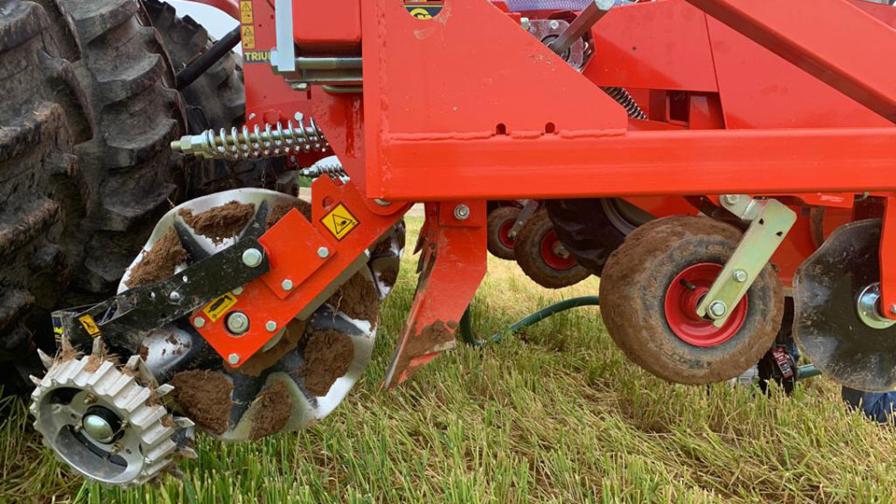4 Insights Into No-Till Production on the Farm

Strip-till and no-till planting requires extra equipment to punch through the cover crop to the soil.
Photo courtesy of C&M North America
Not long ago, you’d hear of only small organic farms practicing no-till. Today, however, you can find even large Salinas Valley ranches trying out the technique.
Managed properly, no-till transplanting has multiple benefits, says Cameron Hill, the new Owner of C&M North America. It suppresses weeds, improves soil texture and aeration, allows for more flexibility with tractor size, and cuts down on water usage. Importantly, it also increases yield.
Since so few growers use the cultivation method, we asked Hill for more thoughts on the subject. His company has several customers using the practice and offers these insights:
- You need extra parts for planting. For Checchi & Magli (C&M), that includes a ripper, large wavy disc, and
Martin cleaners. - Earthworms love it. In Kentucky, NRCM soil experts proved that no-till transplanting had increased the number
of earthworms. - It works with hilly terrain. No-till really starts to shine with rolling or sloped land. You can use that land for much longer periods of time, and plant on land you otherwise couldn’t (less soil loss and erosion).
- No-till isn’t easy. Weed control is totally different. You have to be on top of your game with weed control — a good sprayer and a good operator. There is much less room for error.









